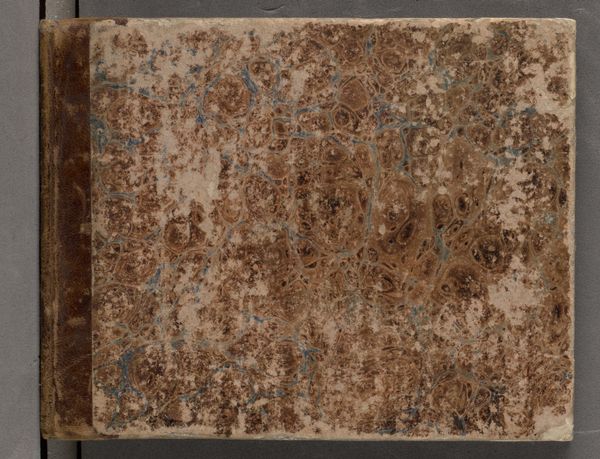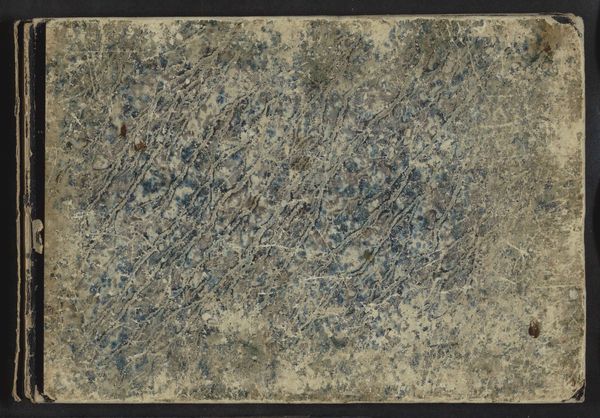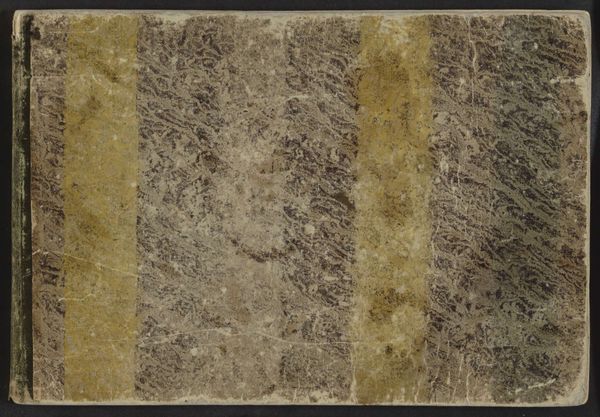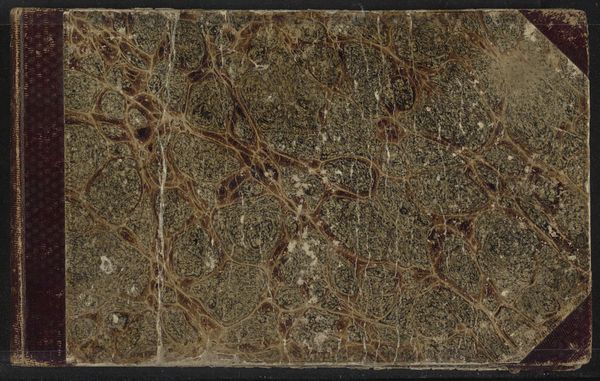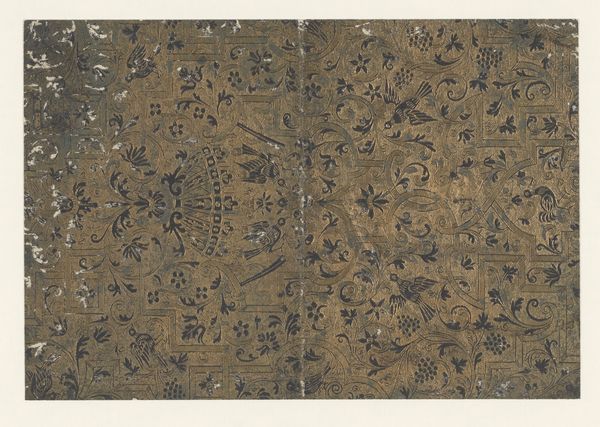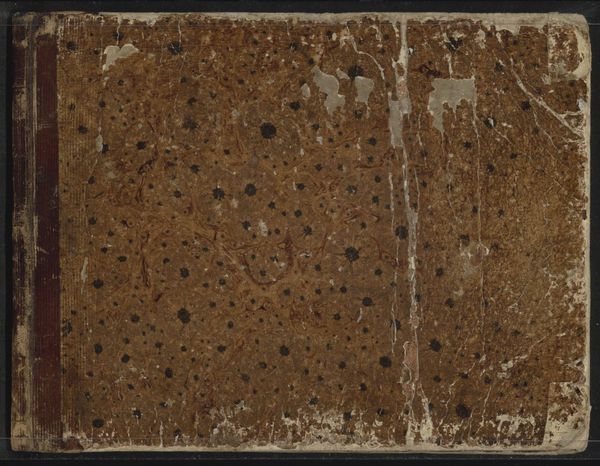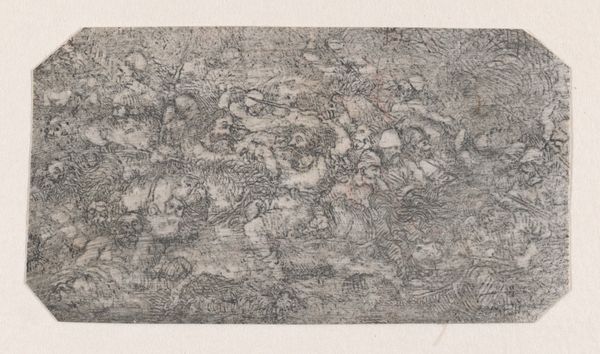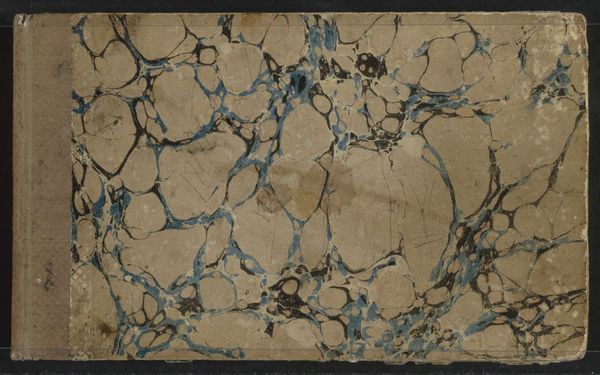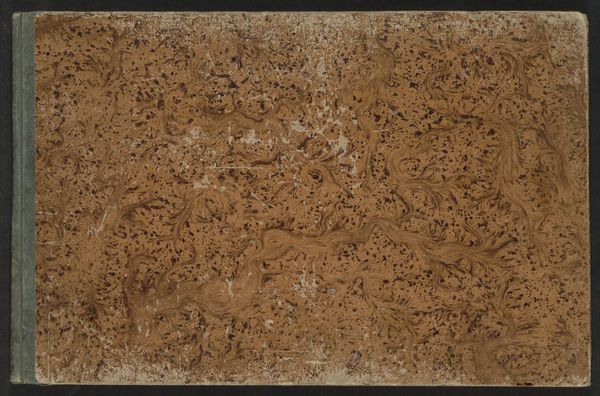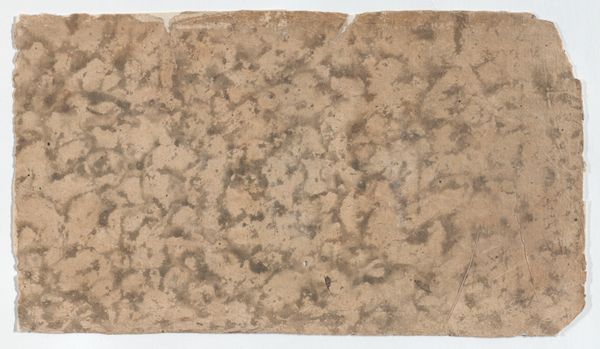
drawing, mixed-media, paper
drawing
mixed-media
paper
romanticism
mixed media
Copyright: Public Domain
Curator: Here we have a "Sketchbook from Italy," attributed to Carl Morgenstern, created circa 1836-1837. It's a mixed media work on paper, a humble, yet intriguing artifact from the Romantic era. Editor: My initial impression is of weathered surfaces and the subtle tones suggesting age. It feels almost like a relic unearthed, evoking a journey or long forgotten secret. Curator: Indeed. Focusing on the surface, note the marbling. Its non-representational quality emphasizes the physical object. The interaction of these muted blues and golds—do you see how they create a textural pattern that's quite active, despite its restrained palette? It activates the surface and challenges our notions of image-making. Editor: The marbling technique itself conjures water, journey, fluidity... It echoes the romantic fascination with nature and movement, specifically perhaps Morgenstern's Italian sojourn, as he encountered classical landscapes ripe with artistic history and his own interior world in relation. The blues, aren't those a nostalgic element too, reminiscent of the skies or water perhaps viewed through a melancholic lens? Curator: A valid point. We cannot ignore the semiotic readings offered through your approach. However, it's vital to acknowledge the purely compositional aspect here: how this marbled plane serves as a foil to what we assume, from the title, the actual artwork must be contained inside. Editor: The form really becomes part of the art itself in your view, doesn't it? Thinking about the period further, such sketchbooks become deeply personal objects, visual diaries reflecting travels but also containing preliminary ideas that take on a deeper meaning when reflecting an artist's own story or trajectory later. It may even take on iconic, legendary meanings once the sketchbook of a revered master, and their practice. Curator: I concede that, especially with an artist associated with the Romantic movement, one can hardly ignore that period's interest in emotionality, intuition. Even the book's age conveys the reverence. The formal composition with marbled endpapers act, though, as more than simply attractive material, as a crucial surface to frame all the other images. Editor: So even from this exterior view, through different avenues, a sense of a deeper significance is palpable, a promise for more artistic revelation locked within? Curator: Precisely, each component heightening our understanding and expectation, even on its cover! Editor: Well, seeing this "Sketchbook" I'm compelled to ponder more about artistic inspirations through symbols, which helps bring personal journeys in history back to the surface, almost from hiding, to new light!
Comments
In 1834, Carl Morgenstern had set out from Munich to Italy. Only three years later, 1837, he returned to Frankfurt. This sketchbook documents the last year in Italy before leaving for home. Between October 1836 and September 1837, he mainly sketched landscape motifs and city views in pencil. In between there are depictions of the artists’ lives in Rome, the Cervara-festivals but also two drawings by befriended artists who wrote something into Morgenstern’s sketchbook as a farewell.The dates of the individual drawings can be used to reconstruct Morgenstern’s trips: in October 1836, he travelled from Rome along the Via Appia first to Albano, by February 1837 at the latest, he was back in Rome and took part in the Cervara festival organised by the Ponte Molle Society. In June, he travelled to Ostia, in July to Tivoli, in August to Assisi. After excursions to Venice, Padua and Vicenza, the heavily used sketchbook ends with a last stay in Venice in September 1837. Morgenstern, while drawing on his walks, captured what he had seen and experienced it both spontaneously and directly. He sketched with quick strokes, for example, the view from the main façade of St. Peter’s with its monumental figures of the apostles or the hustle and bustle of the artists’ society in the Cervara Grottoes. However, in some landscape and city views, he seems to have considered the possible later realisation of the captured motifs into a painting. For example, in 1838, he executed the wide view of the Castello di Giulio in Ostia for the president of the district of Mainz, Baron von Lichtenberg, as a souvenir in oil and noted this in his sketchbook (sheet 21 verso).Particularly in the sketchbook’s second half, perhaps prompted by the approaching departure, there are also drawings that humorously depict artistic life in Italy, for instance, a scene with a group of open-air painters on sheet 26 recto, among them probably Louis-Jules Étex (1810‒1889), who painted their colleague Johann Baptist Kirner (1806‒1866), dressed in traditional costume, or, on sheet 29 verso, the representation of three sketching artists at the gates of Assisi, among them Hippolyte Flandrin (1809‒1864) and probably the French painter Benjamin Duston.For a full sketchbook description, please see “Research”.
Join the conversation
Join millions of artists and users on Artera today and experience the ultimate creative platform.
